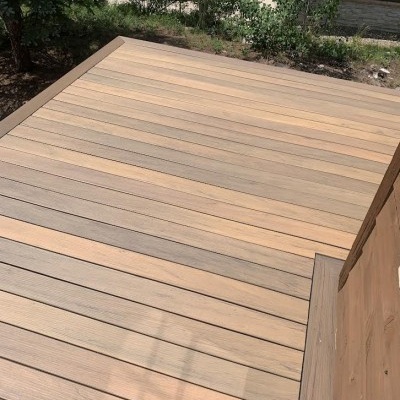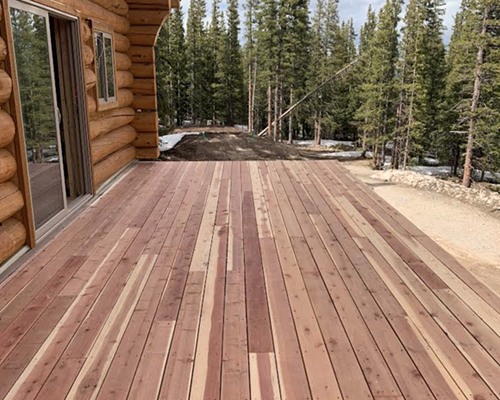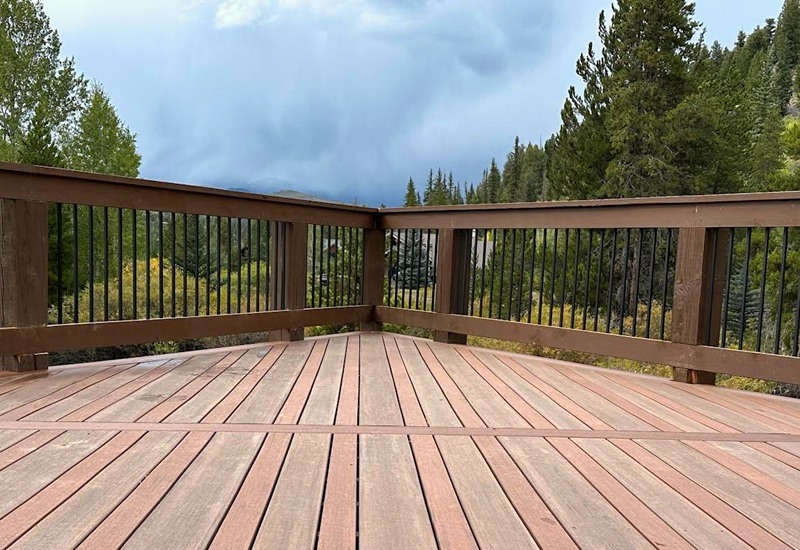Wood vs. Composite Decks: How Do They Compare?
At Colorado Deck Works, we’ve built decks throughout the Breckenridge area that endure extreme sun, heavy snow, and everything in between. One of the most common questions we hear is: should I choose wood or composite decking? The answer depends on your lifestyle, budget, and priorities. In this article, we’ll break down the pros and cons of each option – highlighting leading brands like TimberTech and Trex – so you can make an informed choice for your mountain home.
Wood and Composite Decking: A Quick Overview
Wood decks are made from natural lumber – typically pressure-treated pine, cedar, or redwood. They’re popular for their classic appearance and the ability to stain or paint them in a wide range of colors. Composite decking, on the other hand, is made from a mix of recycled wood fibers and plastic. Brands like Trex and TimberTech have become leaders in the industry by offering products that mimic the look of wood while providing increased durability and lower maintenance.
Living in Breckenridge means your deck has to stand up to serious weather shifts. That makes choosing the right material even more important. Let’s take a closer look at how these materials compare on key factors.
Comparing the Key Factors: Wood vs. Composite Decking
Below is a breakdown of how wood and composite decking stack up in several important areas:
| Factor | Wood Decking | Composite Decking (e.g., Trex, TimberTech) |
|---|---|---|
| Cost | Lower upfront cost | Higher initial investment |
| Maintenance | Needs annual staining/sealing | Minimal – just periodic cleaning |
| Durability | Susceptible to rot, warping, and insects | Resistant to weather, rot, and pests |
| Appearance | Natural, can be customized with stains | Uniform, less customizable |
| Lifespan | 10-15 years with proper care | 25-30+ years |
| Eco-Friendliness | Natural material, but requires trees | Made from recycled materials |
| Installation | Can be easier to cut and fasten | Heavier, may require special tools |
While wood decking can be a more affordable and traditional choice, composite decking from brands like Trex and TimberTech tends to offer better long-term value due to its durability and low maintenance. That said, both have their own unique advantages depending on your specific needs.
Maintenance: How Much Work Are You Willing to Do?
One of the biggest differences between wood and composite decking is how much upkeep they require. Wood needs to be regularly stained or sealed to prevent moisture damage and sun fading – especially in high-altitude places like Breckenridge, where UV rays are stronger and snow is abundant.
Composite decking, by contrast, doesn’t require much more than the occasional rinse to keep it looking sharp. Leading brands like TimberTech and Trex offer products that are engineered to resist fading, staining, and mildew. If you’re looking for a “set it and forget it” option, composite might be your best bet. But if you enjoy DIY projects and the rustic feel of natural wood, the upkeep might not bother you.


Appearance and Aesthetic Considerations
There’s no denying the charm of real wood. Its unique grain patterns, natural imperfections, and color variations give each deck a one-of-a-kind look. You also have the flexibility to change its color with stains or paint over the years.
Composite decking is designed to look like wood but with a more uniform appearance. Some homeowners prefer this consistent look, while others feel it lacks character. In recent years, however, composite options have expanded, and high-end products now offer realistic wood textures and varied tones.
Longevity and Investment
While composite decking has a higher initial price, its long-term value is hard to beat. A well-installed composite deck can last 25-30 years or more with very little upkeep. That’s a big plus in Breckenridge, where winter snow loads and summer sun can take a toll on materials.
Wood decks, when properly maintained, generally last around 10-15 years. However, that comes with more effort and recurring costs for stains, sealants, and possible repairs. If you’re planning to stay in your home for the long haul, investing in composite may save you money (and headaches) over time.

FAQs: Common Questions from Colorado Homeowners
Yes, composite decking can get warm in direct sunlight, especially darker colors. However, many newer products from Trex and TimberTech are designed with heat-dissipating technology to reduce this issue.
Most composite boards are not designed to be painted or stained. They come in a range of colors and textures that are meant to stay consistent over time.
In Breckenridge’s climate, we recommend sealing or staining a wood deck at least once a year to protect against moisture and sun damage.
Quality composite decking is designed with textured surfaces to provide traction, but like any surface, it can become slippery when wet or icy. Choosing a textured finish can help minimize this.
Composite decking can offer a better return on investment due to its low maintenance and longevity, which appeals to future buyers. However, a beautifully maintained wood deck can also add charm and character to a home.
Both have eco-friendly aspects: wood is a renewable resource, and composite decking is often made from recycled materials. Trex, for example, uses 95% recycled content in its boards (source).
Absolutely. Some homeowners opt for composite decking boards with wood railings or accents to combine durability with natural aesthetics.
The freeze-thaw cycles, heavy snow, and strong UV exposure in Breckenridge make durability and maintenance key considerations. Composite decking performs well under these conditions, while wood requires more upkeep to withstand the climate.
Whether you lean toward the natural beauty of wood or the low-maintenance durability of composite, the right choice comes down to your lifestyle, budget, and how much time you want to spend maintaining your deck. At Colorado Deck Works, we’ve helped homeowners all over Breckenridge build decks that look great and last – no matter what Mother Nature throws their way.
Browse Our Custom Deck Portfolios
Explore photos of custom decks built by our contracting team – including decks made with Timbertech® decking, TRex® decking & wood planks.
If you’re still weighing your options or ready to get started, reach out to our team for a free consultation. We’re here to help you create a space that fits your vision and thrives in the high country for years to come.
